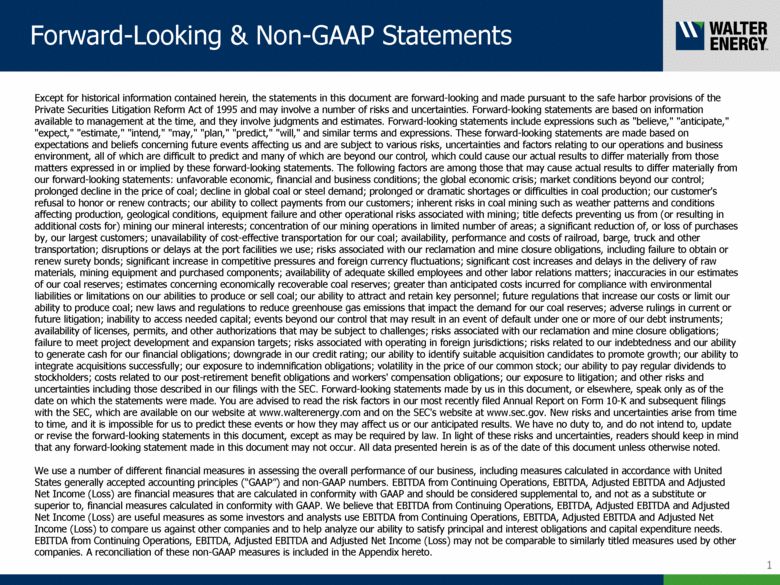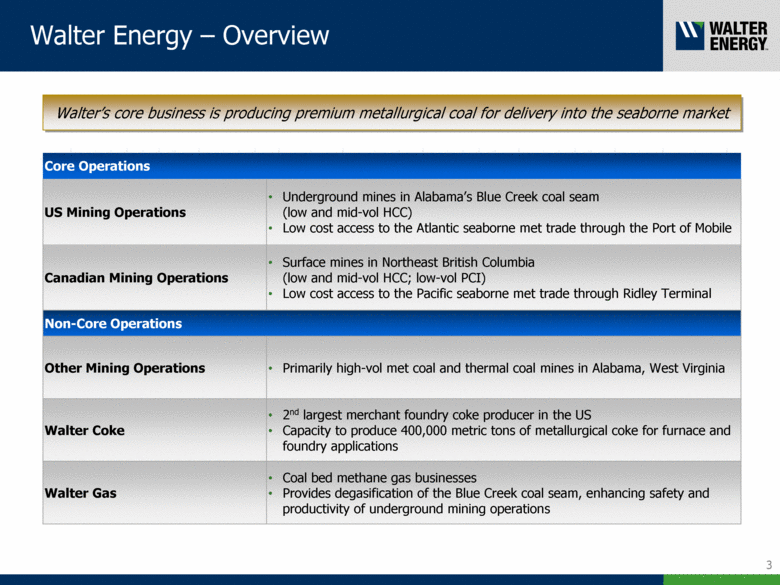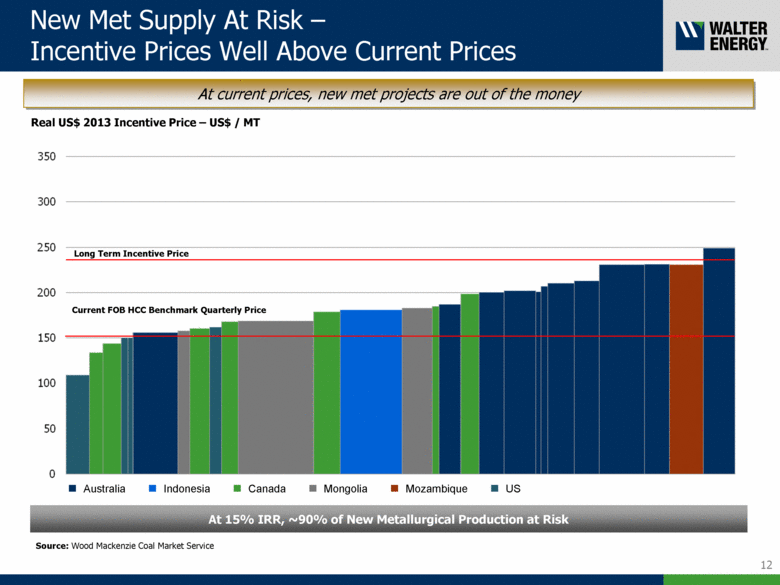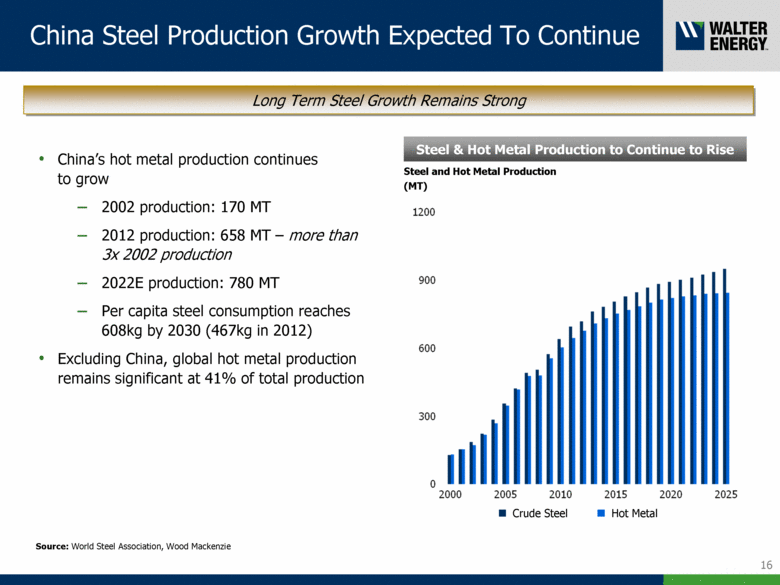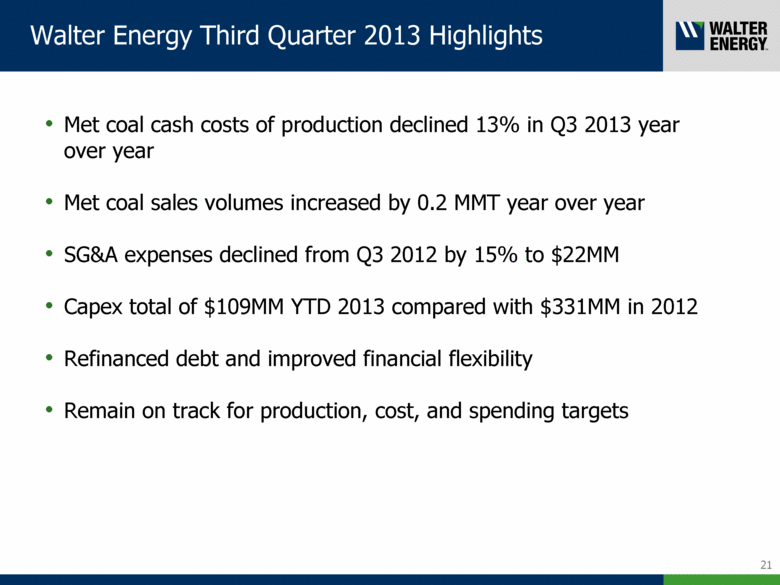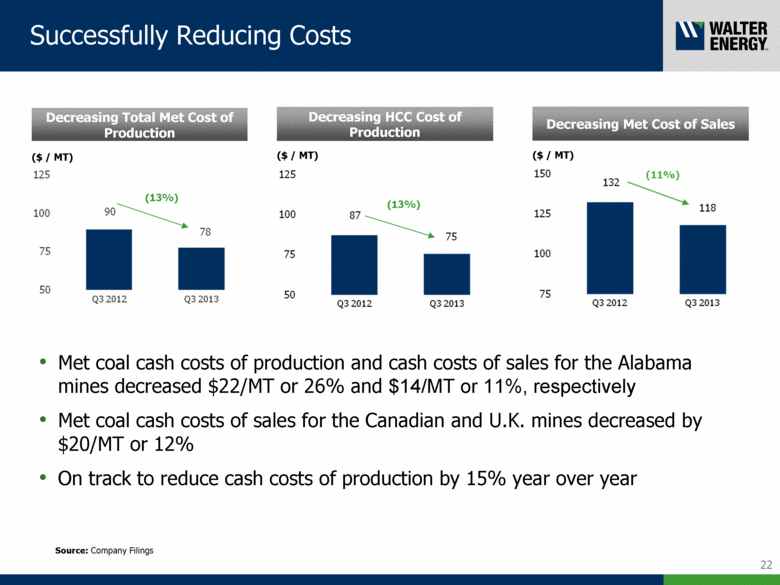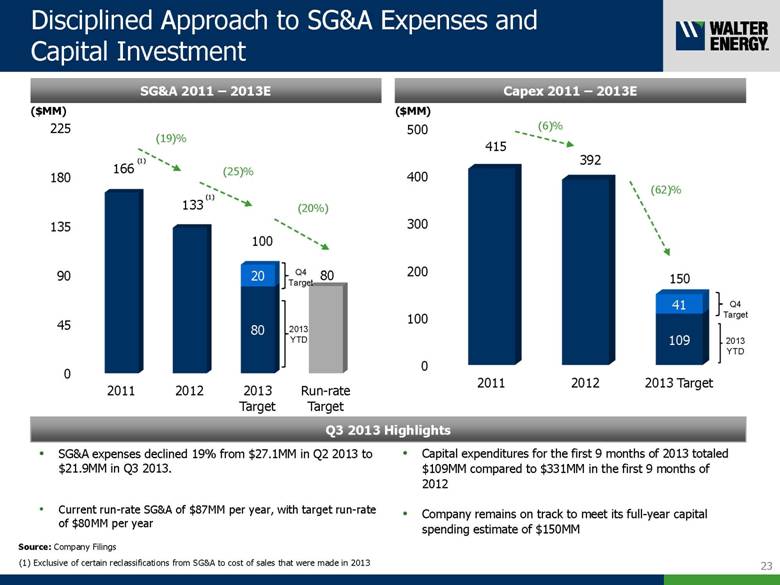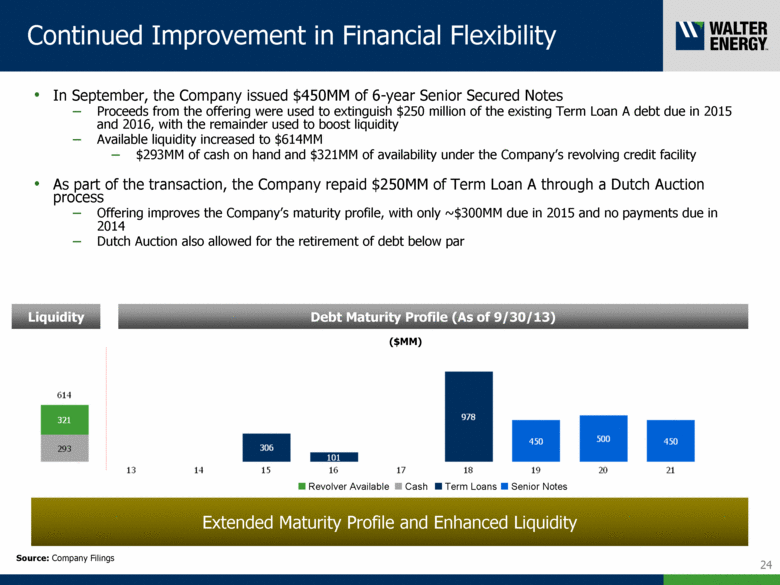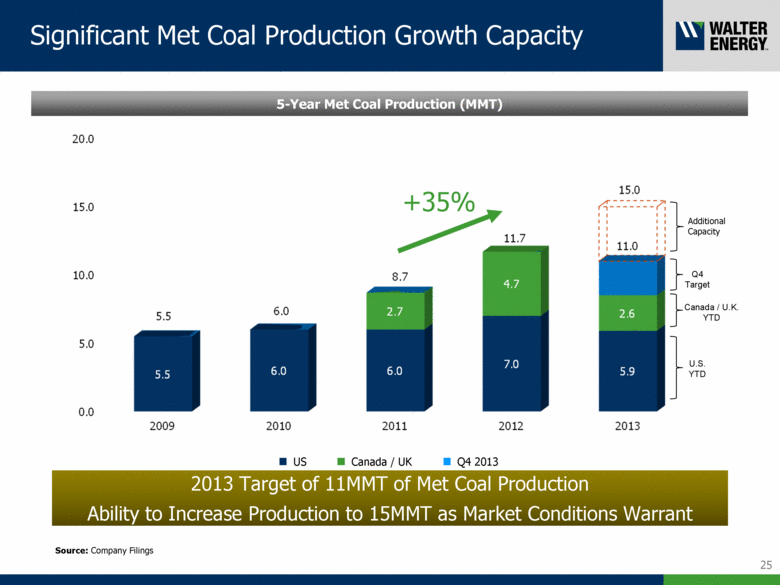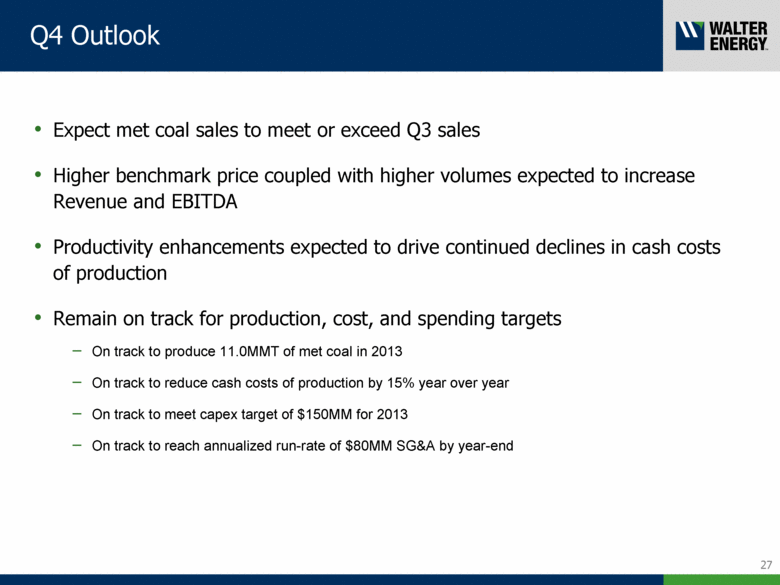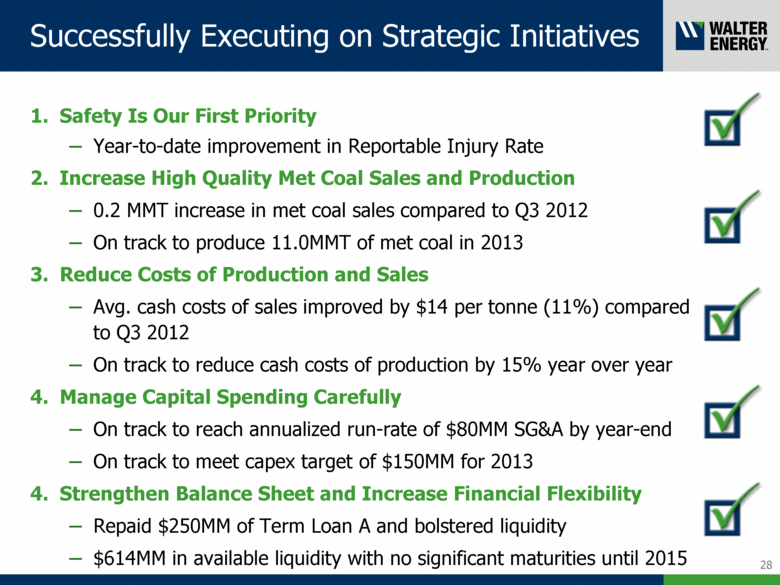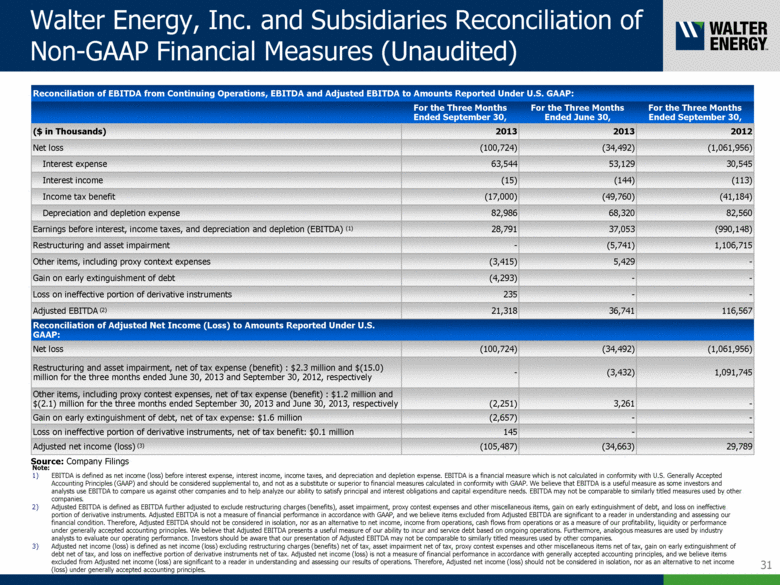
| Walter Energy, Inc. and Subsidiaries Reconciliation of Non-GAAP Financial Measures (Unaudited) Reconciliation of EBITDA from Continuing Operations, EBITDA and Adjusted EBITDA to Amounts Reported Under U.S. GAAP: For the Three Months Ended September 30, For the Three Months Ended June 30, For the Three Months Ended September 30, ($ in Thousands) 2013 2013 2012 Net loss (100,724) (34,492) (1,061,956) Interest expense 63,544 53,129 30,545 Interest income (15) (144) (113) Income tax benefit (17,000) (49,760) (41,184) Depreciation and depletion expense 82,986 68,320 82,560 Earnings before interest, income taxes, and depreciation and depletion (EBITDA) (1) 28,791 37,053 (990,148) Restructuring and asset impairment - (5,741) 1,106,715 Other items, including proxy context expenses (3,415) 5,429 - Gain on early extinguishment of debt (4,293) - - Loss on ineffective portion of derivative instruments 235 - - Adjusted EBITDA (2) 21,318 36,741 116,567 Reconciliation of Adjusted Net Income (Loss) to Amounts Reported Under U.S. GAAP: Net loss (100,724) (34,492) (1,061,956) Restructuring and asset impairment, net of tax expense (benefit) : $2.3 million and $(15.0) million for the three months ended June 30, 2013 and September 30, 2012, respectively - (3,432) 1,091,745 Other items, including proxy contest expenses, net of tax expense (benefit) : $1.2 million and $(2.1) million for the three months ended September 30, 2013 and June 30, 2013, respectively (2,251) 3,261 - Gain on early extinguishment of debt, net of tax expense: $1.6 million (2,657) - - Loss on ineffective portion of derivative instruments, net of tax benefit: $0.1 million 145 - - Adjusted net income (loss) (3) (105,487) (34,663) 29,789 Note: EBITDA is defined as net income (loss) before interest expense, interest income, income taxes, and depreciation and depletion expense. EBITDA is a financial measure which is not calculated in conformity with U.S. Generally Accepted Accounting Principles (GAAP) and should be considered supplemental to, and not as a substitute or superior to financial measures calculated in conformity with GAAP. We believe that EBITDA is a useful measure as some investors and analysts use EBITDA to compare us against other companies and to help analyze our ability to satisfy principal and interest obligations and capital expenditure needs. EBITDA may not be comparable to similarly titled measures used by other companies. Adjusted EBITDA is defined as EBITDA further adjusted to exclude restructuring charges (benefits), asset impairment, proxy contest expenses and other miscellaneous items, gain on early extinguishment of debt, and loss on ineffective portion of derivative instruments. Adjusted EBITDA is not a measure of financial performance in accordance with GAAP, and we believe items excluded from Adjusted EBITDA are significant to a reader in understanding and assessing our financial condition. Therefore, Adjusted EBITDA should not be considered in isolation, nor as an alternative to net income, income from operations, cash flows from operations or as a measure of our profitability, liquidity or performance under generally accepted accounting principles. We believe that Adjusted EBITDA presents a useful measure of our ability to incur and service debt based on ongoing operations. Furthermore, analogous measures are used by industry analysts to evaluate our operating performance. Investors should be aware that our presentation of Adjusted EBITDA may not be comparable to similarly titled measures used by other companies. Adjusted net income (loss) is defined as net income (loss) excluding restructuring charges (benefits) net of tax, asset impairment net of tax, proxy contest expenses and other miscellaneous items net of tax, gain on early extinguishment of debt net of tax, and loss on ineffective portion of derivative instruments net of tax. Adjusted net income (loss) is not a measure of financial performance in accordance with generally accepted accounting principles, and we believe items excluded from Adjusted net income (loss) are significant to a reader in understanding and assessing our results of operations. Therefore, Adjusted net income (loss) should not be considered in isolation, nor as an alternative to net income (loss) under generally accepted accounting principles. 31 Source: Company Filings |

